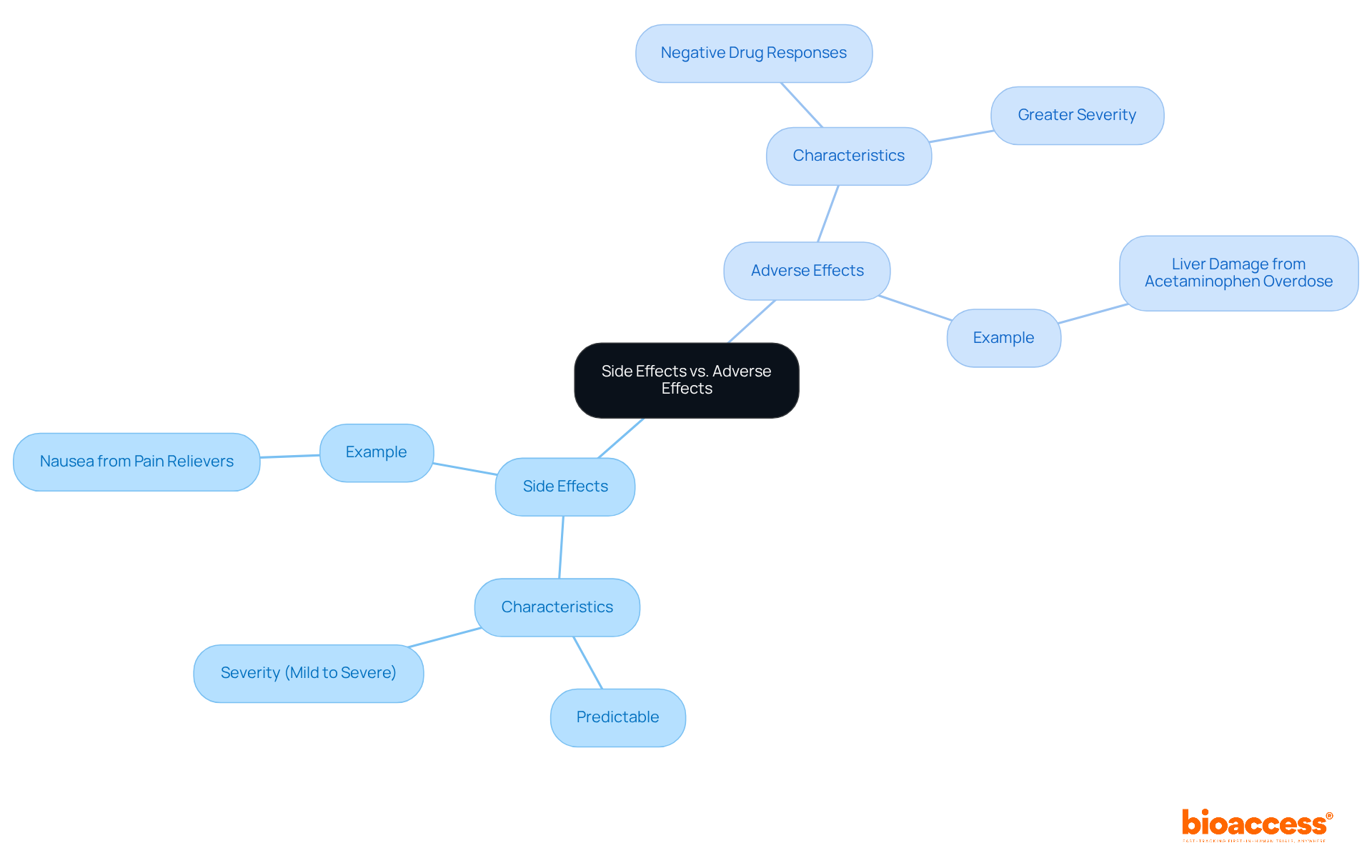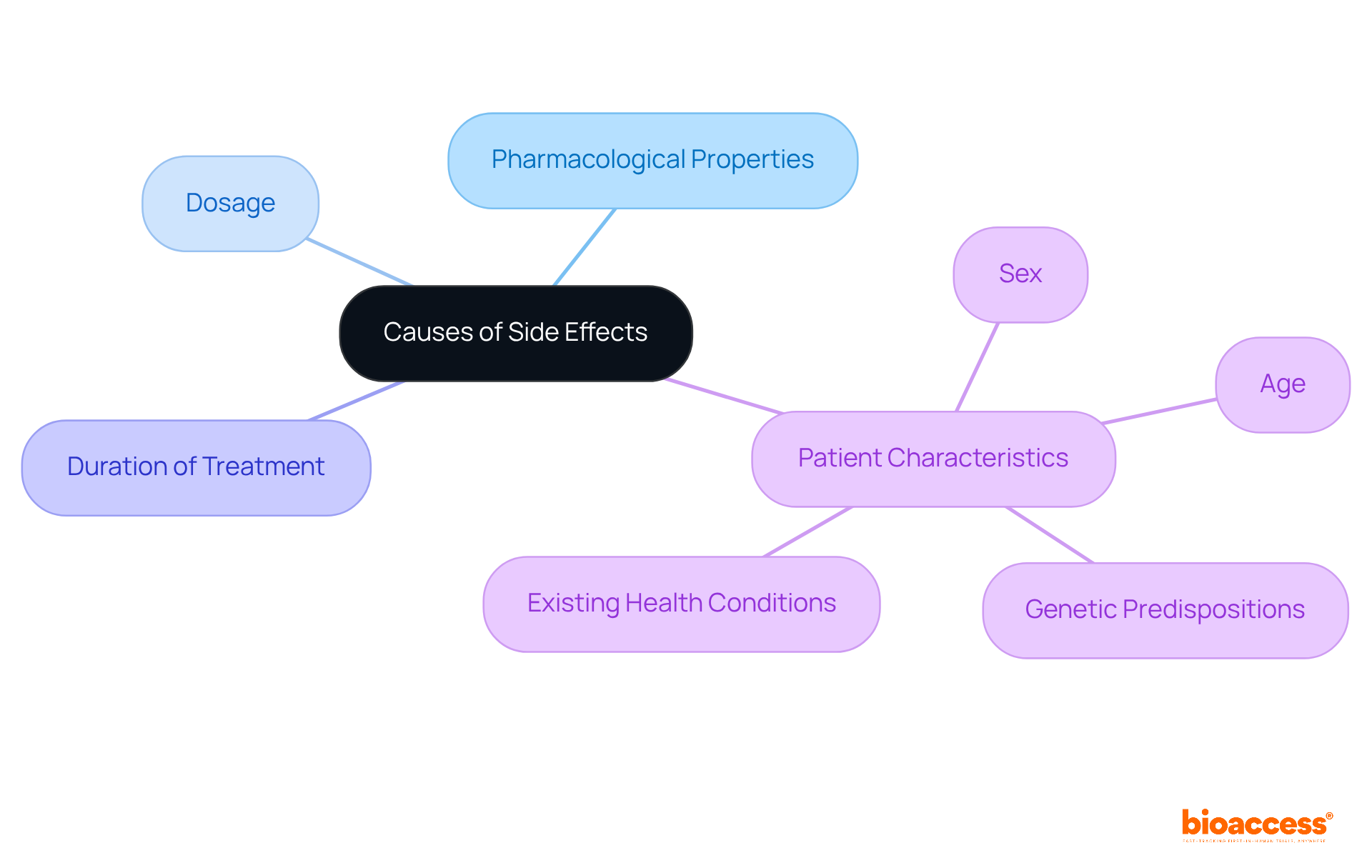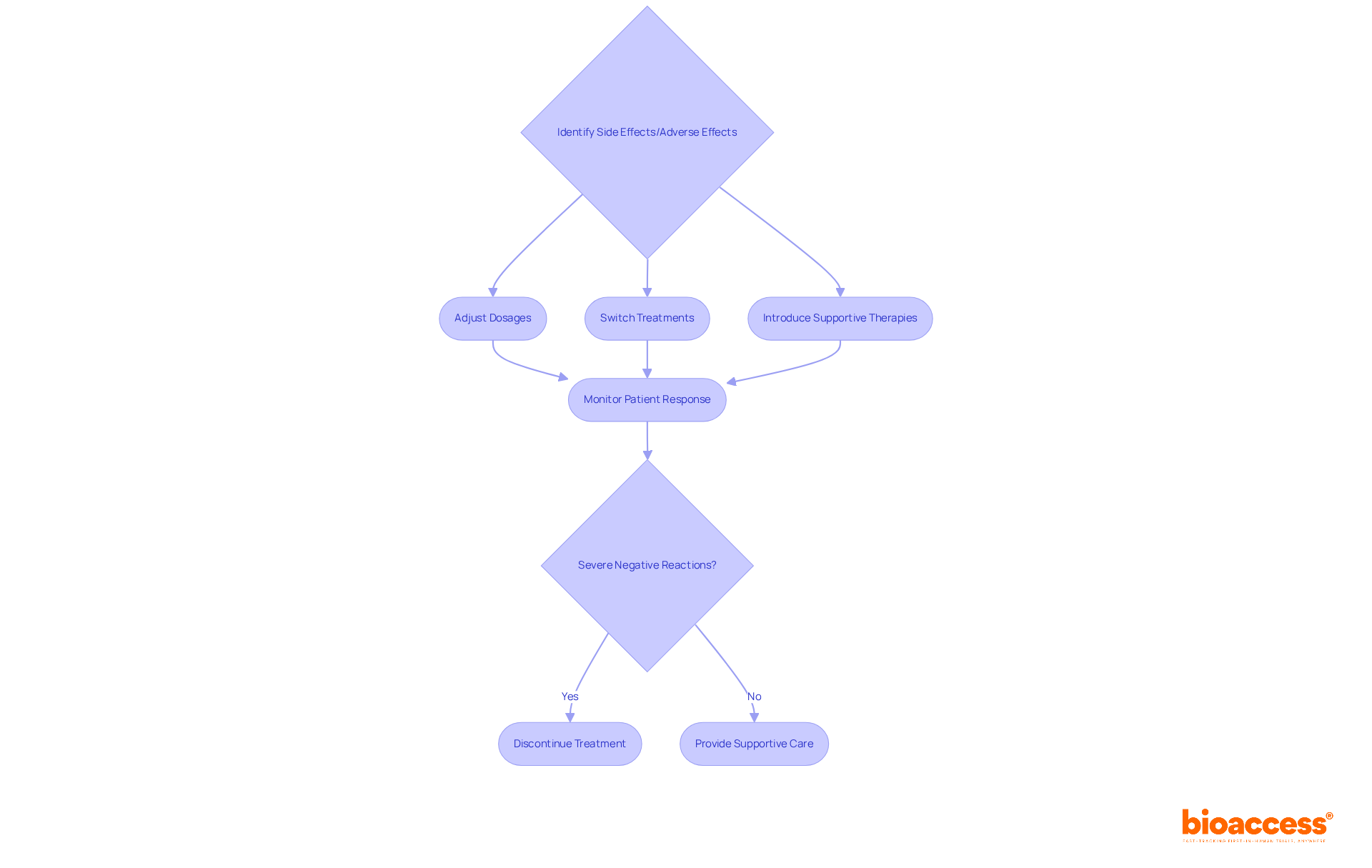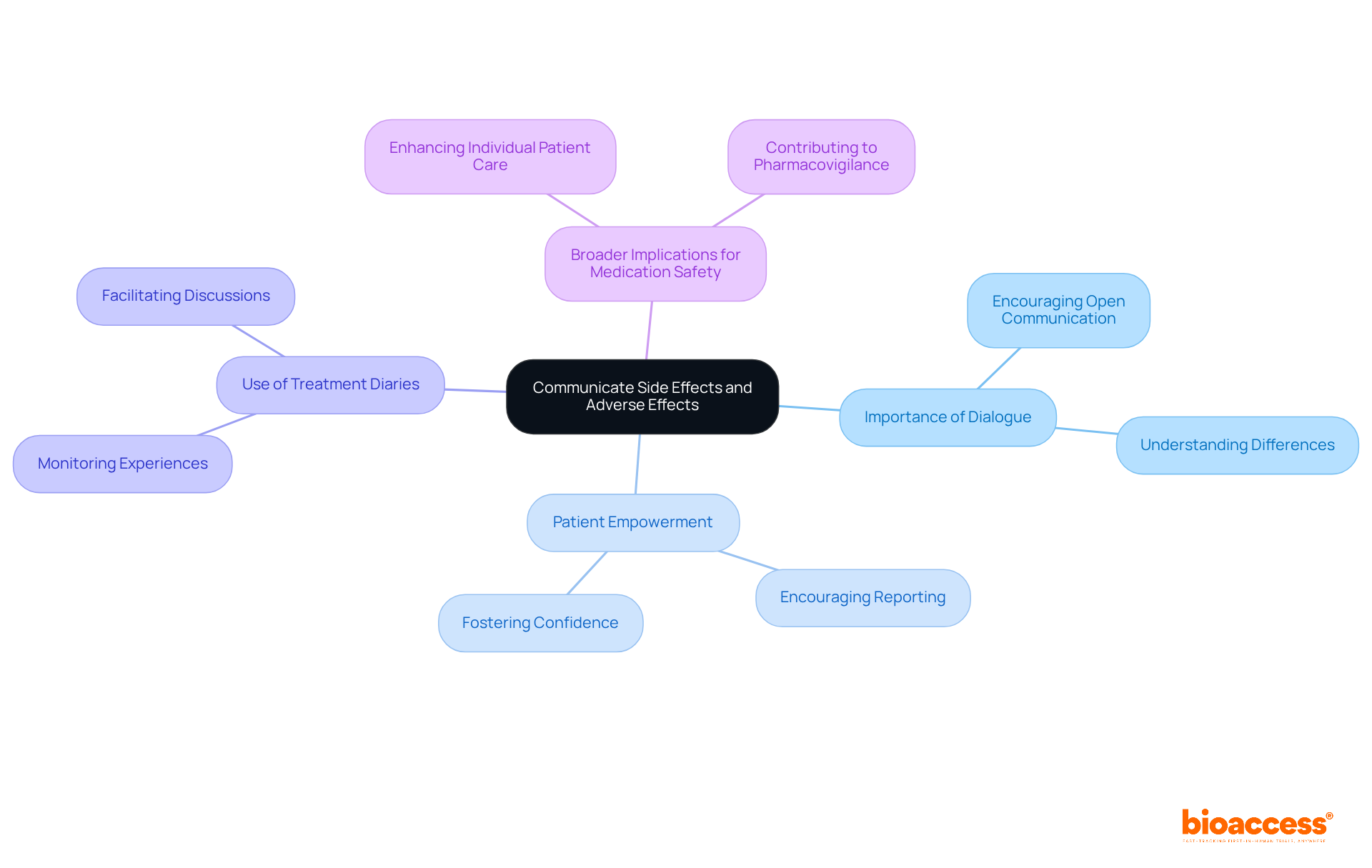


The article elucidates that the distinction between side effects and adverse effects is rooted in their severity and predictability.
This critical distinction is underscored through examples and explanations, highlighting how a comprehensive understanding of these differences empowers healthcare providers and patients alike in effectively managing treatment expectations and outcomes.
Understanding the nuances between side effects and adverse effects is vital in healthcare, where the impact of medication can significantly influence patient outcomes. This article delves into the distinctions between these two concepts, shedding light on how recognizing the difference can empower both patients and healthcare providers.
As individuals navigate their treatment journeys, a crucial question arises: how can one effectively manage and communicate these effects to ensure optimal care and safety? Recognizing these distinctions is not merely academic; it is essential for informed decision-making and fostering effective communication in clinical settings.
Side effects represent additional impacts of a treatment that manifest alongside the intended therapeutic effect. These effects can be predictable and vary in severity, ranging from mild to severe; for example, nausea induced by a pain reliever is a common reaction.
Conversely, negative reactions, also known as negative drug responses, refer to harmful or unintended responses to a medication that may arise even when the drug is utilized as directed. Such consequences often present with greater severity and can lead to significant health complications, such as liver damage resulting from an acetaminophen overdose.
Grasping the side effects and adverse effects difference is crucial for both healthcare providers and patients, as it facilitates the effective management of expectations and treatment outcomes.

Negative reactions and adverse outcomes in clinical settings can arise from a multitude of factors. The pharmacological properties of a drug, its dosage, the duration of treatment, and individual patient characteristics—such as age, sex, genetic predispositions, and existing health conditions—are all significant contributors.
For example, certain medications may induce gastrointestinal upset due to their chemical composition, while others might provoke allergic reactions in individuals with specific sensitivities. Additionally, drug interactions can exacerbate adverse reactions; for instance, the combination of anticoagulants with particular antibiotics can increase the risk of bleeding.
A comprehensive understanding of these causes is essential for healthcare providers, enabling them to tailor treatments effectively and minimize potential risks.

Addressing the side effects and adverse effects difference necessitates a combination of preventive measures and responsive strategies. It is essential for individuals to be informed about the side effects and adverse effects difference prior to initiating a new treatment, as this knowledge empowers them to promptly identify and communicate any issues.
Healthcare providers play a critical role in this process; they can:
Regular monitoring and follow-up appointments are vital for evaluating the patient's response to treatment and implementing necessary modifications. In cases of severe negative reactions, it is important to recognize the side effects and adverse effects difference, as immediate medical assistance may be required, which could involve discontinuing the problematic treatment and providing supportive care.

Clear dialogue with healthcare professionals regarding the side effects and adverse effects difference is essential for efficient management. Patients must feel empowered to discuss any new symptoms or concerns they encounter while undergoing treatment. Healthcare providers should actively encourage patients to report any side effects and adverse effects difference swiftly and provide clear guidance on what to observe.
Utilizing tools such as treatment diaries can significantly assist patients in monitoring their experiences, fostering meaningful conversations during appointments. Furthermore, healthcare providers must ensure that patients comprehend the critical nature of reporting the side effects and adverse effects difference, as this information not only enhances individual patient care but also contributes to broader pharmacovigilance efforts, ultimately improving overall medication safety.

Understanding the distinction between side effects and adverse effects is essential for both patients and healthcare providers. These two concepts, while often used interchangeably, represent different phenomena in the context of medication. Side effects are the predictable, additional impacts of a treatment that occur alongside its intended benefits, while adverse effects refer to harmful or unintended reactions that can arise even when a medication is used correctly. Recognizing this difference is vital for effective treatment management and patient safety.
Throughout the article, key points have been discussed, including:
Factors such as drug properties, patient characteristics, and potential drug interactions contribute to these reactions, underscoring the complexity of medication management. Moreover, proactive measures such as patient education, regular monitoring, and the use of treatment diaries can significantly enhance the management of side effects and adverse effects.
Ultimately, fostering a strong dialogue between patients and healthcare professionals is crucial for improving medication safety and treatment outcomes. By empowering patients to communicate their experiences and concerns, healthcare providers can tailor treatments to minimize risks and enhance therapeutic efficacy. Understanding the side effects and adverse effects difference not only aids in individual patient care but also contributes to broader efforts in pharmacovigilance, ensuring safer healthcare practices for all.
What are side effects?
Side effects are additional impacts of a treatment that occur alongside the intended therapeutic effect. They can be predictable and vary in severity, ranging from mild to severe.
Can you provide an example of a side effect?
An example of a side effect is nausea induced by a pain reliever.
What are adverse effects?
Adverse effects, also known as negative drug responses, refer to harmful or unintended responses to a medication that may occur even when the drug is used as directed.
How do adverse effects differ from side effects?
Adverse effects tend to present with greater severity and can lead to significant health complications, while side effects are additional impacts that may not necessarily be harmful.
Why is it important to understand the difference between side effects and adverse effects?
Understanding the difference is crucial for both healthcare providers and patients as it helps in effectively managing expectations and treatment outcomes.